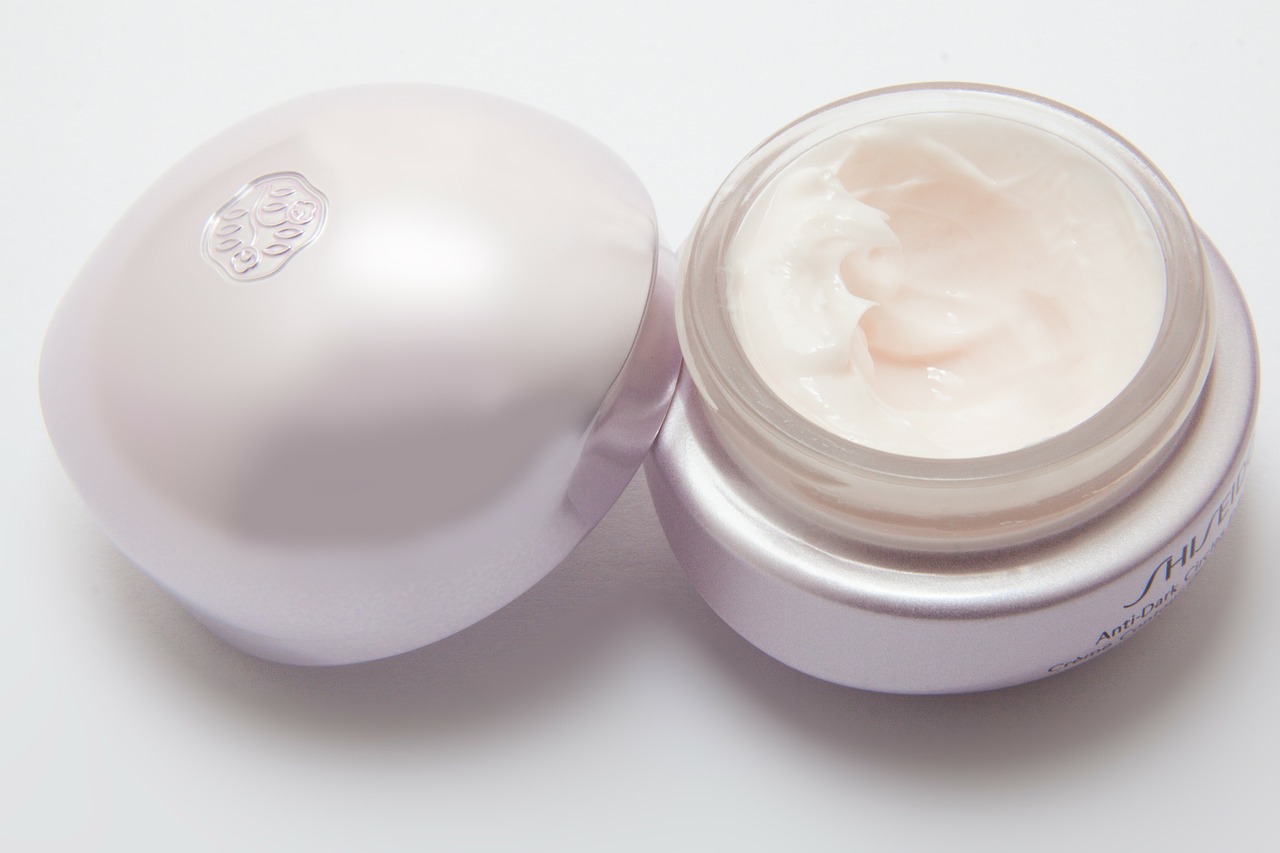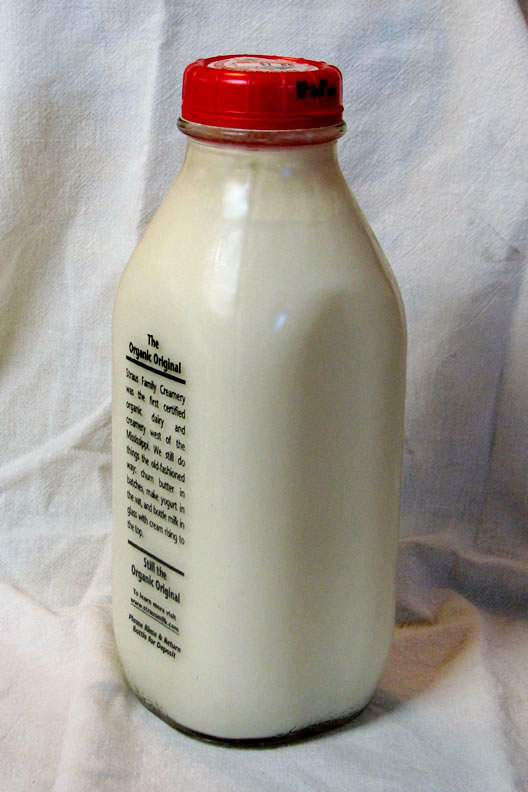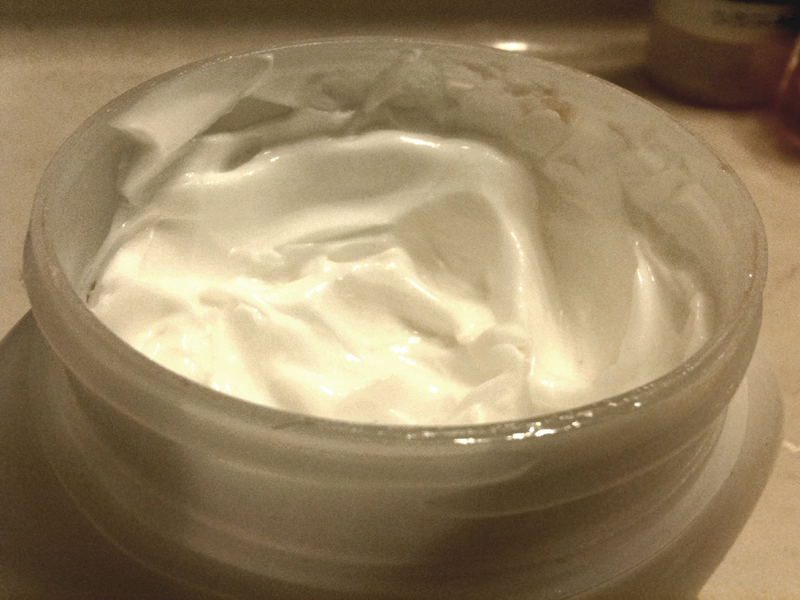|
Cream (pharmacy)
A cream is a preparation usually for application to the skin. Creams for application to mucous membranes such as those of the rectum or vagina are also used. Creams may be considered pharmaceutical products as even cosmetic creams are based on techniques developed by pharmacy and unmedicated creams are highly used in a variety of skin conditions (dermatoses). The use of the finger tip unit concept may be helpful in guiding how much topical cream is required to cover different areas. Creams are semi-solid emulsions of oil and water. They are divided into two types: oil-in-water (O/W) creams which are composed of small droplets of oil dispersed in a continuous water phase, and water-in-oil (W/O) creams which are composed of small droplets of water dispersed in a continuous oily phase. Oil-in-water creams are more comfortable and cosmetically acceptable as they are less greasy and more easily washed off using water. Water-in-oil creams are more difficult to handle but many drugs ... [...More Info...] [...Related Items...] OR: [Wikipedia] [Google] [Baidu] |
Cream In Round Container
Cream is a dairy product composed of the higher-fat layer skimmed from the top of milk before homogenization. In un-homogenized milk, the fat, which is less dense, eventually rises to the top. In the industrial production of cream, this process is accelerated by using centrifuges called "separators". In many countries, it is sold in several grades depending on the total butterfat content. It can be dried to a powder for shipment to distant markets, and contains high levels of saturated fat. Cream skimmed from milk may be called "sweet cream" to distinguish it from cream skimmed from whey, a by-product of cheese-making. Whey cream has a lower fat content and tastes more salty, tangy and "cheesy". In many countries partially fermented cream is also sold: sour cream, crème fraîche, and so on. Both forms have many culinary uses in both sweet and savoury dishes. Cream produced by cattle (particularly Jersey cattle) grazing on natural pasture often contains some carotenoid pigments ... [...More Info...] [...Related Items...] OR: [Wikipedia] [Google] [Baidu] |
Corticosteroid
Corticosteroids are a class of steroid hormones that are produced in the adrenal cortex of vertebrates, as well as the synthetic analogues of these hormones. Two main classes of corticosteroids, glucocorticoids and mineralocorticoids, are involved in a wide range of physiological processes, including stress response, immune response, and regulation of inflammation, carbohydrate metabolism, protein catabolism, blood electrolyte levels, and behavior. Some common naturally occurring steroid hormones are cortisol (), corticosterone (), cortisone () and aldosterone (). (Note that cortisone and aldosterone are isomers.) The main corticosteroids produced by the adrenal cortex are cortisol and aldosterone. Classes * Glucocorticoids such as cortisol affect carbohydrate, fat, and protein metabolism, and have anti-inflammatory, immunosuppressive, anti-proliferative, and vasoconstrictive effects. Anti-inflammatory effects are mediated by blocking the action of inflam ... [...More Info...] [...Related Items...] OR: [Wikipedia] [Google] [Baidu] |
Poultice
A poultice, also called a cataplasm, is a soft moist mass, often heated and medicated, that is spread on cloth and placed over the skin to treat an aching, inflamed, or painful part of the body. It can be used on wounds, such as cuts. 'Poultice' may also refer to a porous solid filled with a solvent used to remove stains from porous stone such as marble or granite. The word "poultice" comes from the Greek word "poltos" transformed in the Latin ''puls, pultes'', meaning "porridge". Types * Some Native Americans used mashed pumpkin or devil’s club as a poultice. *Native Americans have thousands of plants for the making of poultices. The known tribes who utilize(d) plants for poultices include the Abnaki, Aleut, some Algonquin bands, Anticosti, some Apache tribes, Atsugewi, Bella Coola, Blackfoot, Cahuilla, California Indian, Carrier bands, Catawba, Chehalis, Cherokee, some Cheyenne, Chickasaw, Chippewa, Choctaw, Clallam, Coahuilla, some Cocopa, Comanche, Con ... [...More Info...] [...Related Items...] OR: [Wikipedia] [Google] [Baidu] |
Gelling Agent
A gel is a semi-solid that can have properties ranging from soft and weak to hard and tough. Gels are defined as a substantially dilute cross-linked system, which exhibits no flow when in the steady-state, although the liquid phase may still diffuse through this system. A gel has been defined phenomenologically as a soft, solid or solid-like material consisting of two or more components, one of which is a liquid, present in substantial quantity. By weight, gels are mostly liquid, yet they behave like solids because of a three-dimensional cross-linked network within the liquid. It is the crosslinking within the fluid that gives a gel its structure (hardness) and contributes to the adhesive stick ( tack). In this way, gels are a dispersion of molecules of a liquid within a solid medium. The word ''gel'' was coined by 19th-century Scottish chemist Thomas Graham by clipping from ''gelatine''. The process of forming a gel is called gelation. IUPAC definition } C ... [...More Info...] [...Related Items...] OR: [Wikipedia] [Google] [Baidu] |
Topical Cream Formulation
Topical cream formulation is an emulsion semisolid dosage form that is used for skin external application. Most of the topical cream formulations contain more than 20 per cent of water and volatiles and/or less than 50 per cent of hydrocarbons, waxes, or polyethylene glycols as the vehicle for external skin application. In a topical cream formulation, ingredients are dissolved or dispersed in either a water-in-oil (W/O) emulsion or an oil-in-water (O/W) emulsion. The topical cream formulation has a higher content of oily substance than gel, but a lower content of oily ingredient than ointment. Therefore, the viscosity of topical cream formulation lies between gel and ointment. The pharmacological effect of the topical cream formulation is confined to the skin surface or within the skin. Topical cream formulation penetrates through the skin by transcellular route, intercellular route, or trans-appendageal route. Topical cream formulation is used for a wide range of diseases and ... [...More Info...] [...Related Items...] OR: [Wikipedia] [Google] [Baidu] |
British Pharmacopoeia
The ''British Pharmacopoeia'' (''BP'') is the national pharmacopoeia of the United Kingdom. It is an annually published collection of quality standards for medicinal substances in the UK, which is used by individuals and organisations involved in pharmaceutical research, development, manufacture and testing. Pharmacopoeial standards are publicly available and legally enforceable standards of quality for medicinal products and their constituents. The ''British Pharmacopoeia'' is an important statutory component in the control of medicines, which complements and assists the licensing and inspection processes of the UK's Medicines and Healthcare products Regulatory Agency (MHRA). Together with the ''British National Formulary'' (BNF), the ''British Pharmacopoeia'' defines the UK's pharmaceutical standards. Pharmacopoeial standards are compliance requirements; that is, they provide the means for an independent judgement as to the overall quality of an article, and apply ... [...More Info...] [...Related Items...] OR: [Wikipedia] [Google] [Baidu] |
Sun Burn
Sunburn is a form of radiation burn that affects living tissue, such as skin, that results from an overexposure to ultraviolet (UV) radiation, usually from the Sun. Common symptoms in humans and animals include: red or reddish skin that is hot to the touch or painful, general fatigue, and mild dizziness. Other symptoms include blistering, peeling skin, swelling, itching, and nausea. Excessive UV radiation is the leading cause of (primarily) non-malignant skin tumors,World Health Organization, International Agency for Research on Cance"Do sunscreens prevent skin cancer" Press release No. 132, 5 June 2000World Health Organization, International Agency for Research on Cance"Solar and ultraviolet radiation"IARC Monographs on the Evaluation of Carcinogenic Risks to Humans, Volume 55, November 1997 and in extreme cases can be life-threatening. Sunburn is an inflammatory response in the tissue triggered by direct DNA damage by UV radiation. When the cells' DNA is overly damaged by ... [...More Info...] [...Related Items...] OR: [Wikipedia] [Google] [Baidu] |
Triple Sulfa
Sulfadiazine is an antibiotic. Used together with pyrimethamine, a dihydrofolate reductase inhibitor, it is the treatment of choice for toxoplasmosis, which is caused by a protozoan parasite. It is a second-line treatment for otitis media, prophylaxis of rheumatic fever, chancroid, chlamydia, and infections by ''Haemophilus influenzae''. It is also used as adjunct therapy for chloroquine-resistant malaria and several forms of bacterial meningitis. It is taken by mouth. Sulfadiazine is available in multiple generic tablets of 500 mg. For urinary tract infections, the usual dose is 4 to 6 grams daily in 3 to 6 divided doses. Common side effects include nausea, diarrhea, headache, fever, rash, depression, and pancreatitis. It should not be used in people who have severe liver problems, kidney problems, or porphyria. If used during pregnancy, it may increase the risk of kernicterus in the baby. While the company that makes it does not recommend use during breastfeeding, use i ... [...More Info...] [...Related Items...] OR: [Wikipedia] [Google] [Baidu] |
Long-chain Fatty Acid
In chemistry, particularly in biochemistry, a fatty acid is a carboxylic acid with an aliphatic chain, which is either saturated or unsaturated. Most naturally occurring fatty acids have an unbranched chain of an even number of carbon atoms, from 4 to 28. Fatty acids are a major component of the lipids (up to 70% by weight) in some species such as microalgae but in some other organisms are not found in their standalone form, but instead exist as three main classes of esters: triglycerides, phospholipids, and cholesteryl esters. In any of these forms, fatty acids are both important dietary sources of fuel for animals and important structural components for cells. History The concept of fatty acid (''acide gras'') was introduced in 1813 by Michel Eugène Chevreul, though he initially used some variant terms: ''graisse acide'' and ''acide huileux'' ("acid fat" and "oily acid"). Types of fatty acids Fatty acids are classified in many ways: by length, by saturation vs unsaturation ... [...More Info...] [...Related Items...] OR: [Wikipedia] [Google] [Baidu] |
Fluocinolone Acetonide
Fluocinolone acetonide is a corticosteroid primarily used in dermatology to reduce skin inflammation and relieve itching. It is a synthetic hydrocortisone derivative. The fluorine substitution at position 9 in the steroid nucleus greatly enhances its activity. It was first synthesized in 1959 in the Research Department of Syntex Laboratories S.A. Mexico City. Preparations containing it were first marketed under the name Synalar. A typical dosage strength used in dermatology is 0.01–0.025%. One such cream is sold under the brand name Flucort-N and includes the antibiotic neomycin. Fluocinolone acetonide was also found to strongly potentiate TGF-β-associated chondrogenesis of bone marrow mesenchymal stem/progenitor cells, by increasing the levels of collagen type II by more than 100 fold compared to the widely used dexamethasone. Fluocinolone acetonide intravitreal implants have been used to treat non-infectious uveitis. A systematic review could not determine whether fluocinol ... [...More Info...] [...Related Items...] OR: [Wikipedia] [Google] [Baidu] |
Cold Cream
Cold cream is an emulsion of water and certain fats, usually including beeswax and various scent agents, designed to smooth skin and remove makeup. Cold cream is an emulsion of water in a larger amount of oil, unlike the oil in water emulsion of vanishing cream, so-called because it seems to disappear when applied on skin. The name "cold cream" derives from the cooling feeling that the cream leaves on the skin. Variations of the product have been used for nearly 2000 years. Cold cream is mainly used for skin treatment (such as a facial mask or lip balm), due to its moisturizing properties. It can also be used to remove makeup and as shaving cream. History The invention of cold cream is credited to Galen, a physician in second century Greece. The original formulation involved rose water, beeswax, and either almond or olive oil. The beeswax is essential to a successful cream, as it is the emulsifying ingredient, but it is extremely inefficient compared to modern emulsifiers. ... [...More Info...] [...Related Items...] OR: [Wikipedia] [Google] [Baidu] |
Counter-irritant
A counterirritant is a substance which creates irritation or mild inflammation in one location with the goal of lessening discomfort and/or inflammation in another location. This strategy falls into the more general category of counterstimulation. Topical counter-irritants are non-analgesic, non-anesthetic substances or treatments used to treat pain. Capsaicin, menthol (mint oil), methyl salicylate, and camphor are examples of counterirritants. Heat and cold therapy and massage relieve pain by counterstimulation. The US Food and Drug Administration defines a counterirritant as "An externally applied substance that causes irritation or mild inflammation of the skin for the purpose of relieving pain in muscles, joints and viscera distal to the site of application. They differ from the anesthetics, analgesics, and antipruritic agents, however, in that the pain relief they produce results from stimulation—rather than depression—of the cutaneous sensory receptors and occurs in s ... [...More Info...] [...Related Items...] OR: [Wikipedia] [Google] [Baidu] |





